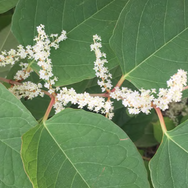Terrestrial
Invasive Species.
Terrestrial species include plants, animals, insects, fungi, and pathogens. Our focus at EKISC is solely on invasive plant species.
Invasive plants pose threats to people, animals, and ecosystems. They can establish quickly and easily on both disturbed and un-disturbed sites causing widespread negative economic, social, and environmental impacts. Many invasive plants have been introduced to BC without their natural predators and pathogens that would otherwise keep their populations in check in their countries of origin.


Regional Priority Plant Species
Invasive Species ID.
There are currently over 200+ invasive species documented in BC. The Invasive Species Council of BC has a good online database where you can search for a species using plant colour, habitat, or animal type.
EKISC also has links to many print invasive species ID publications in pdf form for download. Follow the link below for more resources.
If you suspect that you have found an invasive species, we ask that you use the provincial Report Invasives app. This app allows us and the province to respond quickly to priority species, and helps us document new or continuing outbreaks in our region.
Distribution in
British Columbia

-
As of 2014, there are over 117,000 locations with recorded invasive plant species in B.C.
-
Habitats with the most invasive plant sites are the Interior Douglas-fir, Coastal Western Hemlock, Interior Cedar - Hemlock, and the Sub-Boreal Spruce zones, all of which have more than 10,000 known invasive plant locations. High elevation areas have the fewest invasive plant location records (12 or less each).
-
There are a total of 175 recorded invasive plants species in B.C. The most common invasive plant species are spotted knapweed, Canada thistle, common tansy and oxeye daisy, with more than 10,000 known locations for each. However, many of the 175 species are much less abundant—for example 36 species are known to occur at 10 or fewer locations in the province at this time.
Source: BC Ministry of Environment
How does the East Kootenay Region Compare?
As of 2017 there are over 11,500 locations with recorded invasive plant species in the East Kootenany.
There are over 50 recorded invasive plants species in the East Kootenay. The most common invasive plant species are Blueweed, Spotted Knapweed, Baby's Breath, Canada Thistle, Dalmatian Toadflax, and Hawkweeds.
The East Kootenay has known locations of Black Henbane and Perennial Pepperweed, both of which have extremely limited distribution in the province, and are currently high priority for eradication in the RDEK.
Field Scabious, Rush Skeletonweed, Hoary Alyssum, Purple Loosestrife, and Hoary Cress have a limited distribution in the East Kootenay.
There are a total of 175 recorded invasive plants species in B.C. The most common invasive plant species are spotted knapweed, Canada thistle, common tansy and oxeye daisy, with more than 10,000 known locations for each. However, many of the 175 species are much less abundant—for example 36 species are known to occur at 10 or fewer locations in the province at this time.
Source: BC Ministry of Environment
What you can do!
Land-based recreation activities, like hiking, biking, ATVing, camping, and gardening can spread terrestrial invasive species to new locations. Plants, plant parts, animals, and microscopic creatures can cling to clothing, equipment, and vehicles. If our gear, clothing, and vehicles are not cleaned before entering or leaving an area, these species can be introduced into new areas. In addition, the intentional or accidental release of pet species or improper disposal of garden waste is another primary pathway of introduction.
Think ahead when planning an outing, getting rid of yard waste, or releasing an unwanted pet. Ask yourself:
-
When entering and departing the area, is my vehicle, ATV, bicycle, camping gear, and other equipment clean of plant debris and mud?
-
What are the local invasive plants I should be aware of?
-
If I spot an invasive plant, do I know who to alert?
-
Where can I dispose of yard waste properly?
-
Where can I do with unwanted pets?
If you are unsure, you can always ask us!



























